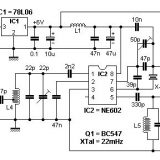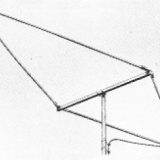Few words about National Radio Corporation

National was founded in 1914 as “The National Toy Company”, but by 1916 had broadened their range and renamed themselves as the “National Company Inc”. By the 1920s, they made a start into radio production. From this time on, they produced radio components, such as capacitors and coils.
At that time regenerative receivers were in common use and National were approached by two engineers from Harvard University to produce coils and components for their Browning-Drake Receiver kit. This was a regenerative receiver having a radio frequency stage to increase sensitivity. With separate controls for each valve filament voltage, RF tuning, and detector tuning, it would have been user-hostile by today’s standards.
By the 1930’s, National had established a reputation with the radio hams and produced a number of short-wave radios including the FB-7 which used plug-in coils. In 1935, National introduced the HRO receiver which also used plug-in coils.
These were produced during the War years and quite a few must have been used by the British forces, as they appeared on the surplus market in Britain during the ’50s. This radio used the HRO planetary drive that can be seen on the NC-100 listed in 1937 catalogues.
An amateur bands only version, the NC101X was also produced.. These radios dispense with plug-in coils and had a moveable catacomb containing the coils. This had a rack and pinion mechanism to allow the coils to make contact with the front-end circuitry.
During the 1930’s, National also made super regenerative receivers to cover the VHF spectrum. These used acorn valves. My first encounter with National was probably a government surplus VHF signal generator using a 957 acorn valve triode and “Velvet Vernier” tuning dial.
After the war years, National produced a number of amateur communications receivers which were fairly unremarkable. The NC 109 is typical of these, but there were earlier versions using octal-based valves. A radio ham friend had one of these (Might have been an NC173) with main tuning and bandspread and was always complaining about its lack of sensitivity.
In 1964, National reverted to the HRO theme with the introduction of its HRO 500. This was a fully synthesized transistor receiver with the familiar HRO dial drive. I remember everyone being very excited about it at the RSGB exhibition.
Like many other receivers of the day it was built the same way as a valve receiver. The HRO 600 followed, but National mainly sold its products to the US government from the 1970’s on. The company ceased in 1991.



















Last Comments